If you’re like me, you love condiments. Whether it’s ketchup on your fries or delectable, whole grain mustard on an Italian sausage with grilled peppers, they can make or break a meal. I guess I just don’t care for “plain” food.
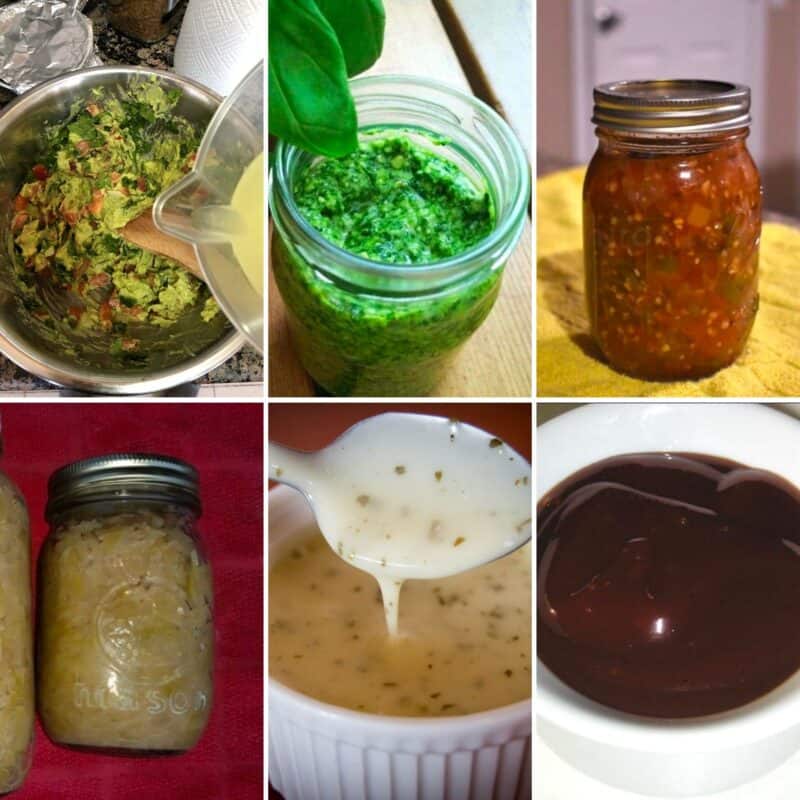
But store-bought condiments can be expensive, and often contain all sorts of unhealthy ingredients.
And, not for nothing, outside the most commonly used they invariably get pulled out once or twice before bottles just start multiplying on your fridge door. Not good.
Also, if you are like me you probably want to live a lifestyle of radical self-sufficiency. This idea extends to mealtime, too!
Why should you settle for mass-produced, chemical-laden garbage toppings when you could craft something ten times tastier and better at home?
That idea is why I’ve compiled this list of 15 condiments you can make yourself, in your own kitchen, without breaking a sweat.
Let’s get cooking and soon you can enjoy your own homemade condiments.
Why Should You Make Your Own Condiments?
When you face down that nearly endless aisle of condiments at your grocery store, it is easy to forget all about the notion of making your own.
When you have a dozen brands of mustard, every type of sauce, and even exotic toppings at your beck and call for a few bucks, why waste the time?
There are actually several good reasons why you should take the time, and believe me you won’t be wasting it!
When you make your own condiments, you are in complete control of the ingredients. If you want your condiment to avoid certain food sensitivities, you can.
You can also optimize them according to dietary requirements and much more. You also get to avoid all those pesky preservatives that clog commercial versions.
Another great reason to make your own condiments is that you get to save a lot of money. Sure, those $3 bottles of sauce might not break the bank.
But if you are using them on a regular basis, they can start to add up, and when is the last time you even used a whole bottle of something before throwing it out?
When you make your own, you can get all the ingredients in bulk for a fraction of the price, and you only make as much as you need.
You also have control over the taste when you make your own condiments. If you like a condiment thicker or thinner, it is easily done. Spicier? No problem? More savory? Easy fix.
You get to make it exactly the way you want, without having to rifle through a half-dozen brands all the while hoping that some faceless corporation got it right.
Last but not least, when you make your own condiments, you are being more environmentally conscious and sustainable.
Those plastic bottles all end up in a landfill somewhere, and while some can be recycled, many cannot.
All of these reasons together should be enough to convince you that making your own condiments is the way to go.
15 Condiments You Can Make from Scratch
1. Ketchup
Ketchup is the reigning king of condiments, at least in North America. Sold everywhere, and put on everything, it is an indispensable topping in most kitchens, and is also an ingredient itself in other sauces and various recipes.
Tangy, flavorful, and possessing a little bit of sweetness, good ketchup is really something special.
Sadly, most of our big brand ketchups that we can purchase off grocery store shelves today have precious little in common with the thick, rich sauces of yesteryear.
I can promise you that once you try the genuine article you’ll never want to go back to the usual suspects. The best part is that real ketchup requires precious little actual effort to make as long as you have a slow cooker.
This version is a favorite of mine and in terms of consistency is pretty close to the usual bottled stuff. However, it blows it out of the water in terms of flavor.
Notably, this recipe relies on crushed tomatoes instead of tomato paste, which is the typical core ingredient of homemade ketchup. Get the recipe here.
2. Mustard
You cannot have ketchup without mustard on some foods. From hot dogs to burgers, these two are practically inseparable.
I have actually never been a big fan of mustard, at least not the stuff you get in a bottle. It was always too watery and lacked flavor for me. That all changed when I started making my own from scratch.
And you’ll want to start making your own, too, when you see just how easy it can be. You’ll wonder why you ever put up with the lame yellow mustards that some makers pawn off as real mustard these days.
This recipe is a great basic deli-style mustard that has just the right amount of tang. If you want to step it up a notch, try kicking in a little garlic. Easy recipe right here.
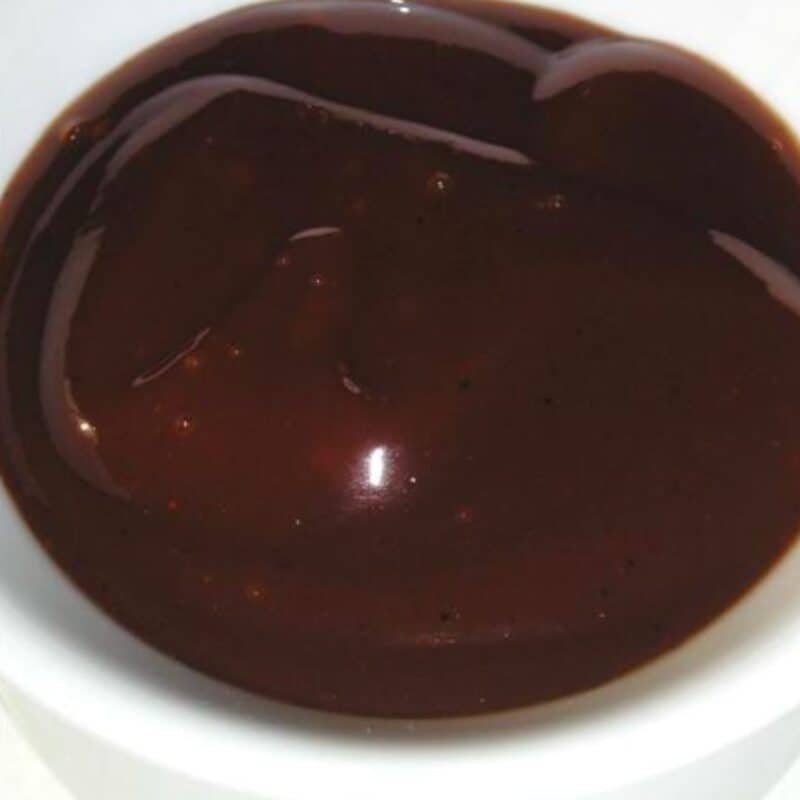
3. BBQ Sauce
For certain dishes and more than a few households, it is barbeque sauce and not ketchup that rules the roost.
Whether it is chicken, ribs or just about anything else you can think to put it on, this smoky, slightly sweet, and always delicious sauce can make any meal special.
Unlike some of the other items on this list, BBQ sauce can be a bit more complicated to make from scratch and usually takes a bit more time.
Giving all the ingredients time to blend and mingle is paramount for optimum flavor and texture.
However, I promise the results are definitely worth the effort as this sauce is leaps and bounds tastier than anything you will find in a bottle at the store.
It might not beat out the blessed stuff from a real pit master’s personal vintage, but this recipe is a great intro to making your own, and has a great balance of flavors and produces a thick, rich sauce that is perfect for glazing meats or using as a dipping sauce.
As always, BBQ sauce is a wonderful canvas for improvisation and personalization. You could also try kicking up the spice quotient by adding some chipotle powder or smoked paprika to give it an extra zing. Check our BBQ sauce recipe.
4. Mayo
Most folks think mayo is either a mandatory inclusion for sandwiches or an oily disaster, but love it or leave it as a condiment of its own mayo also serves as the basis of all kinds of other specialty sauces and condiments.
In any case, homemade mayo is light, almost meringue-like, and has nearly nothing in common with the tasteless, oily paste you scoop from the jar with the blue top.
If you have ever had really good mayo, you know that it is a revelation. The best part about making your own is that it can be done in just a few minutes with an immersion blender.
No longer do you have to suffer from watery, lifeless condiments or worry about all the preservatives in the store-bought stuff.
This recipe yields a mayonnaise that is light, airy, and has a beautiful consistency that is ready to be used in all sorts of other sauces. A decent sized batch will go a long way. Try our mayo recipe.
5. Cocktail Sauce
Nothing quite says shrimp dinner like that vibrant, fire hydrant-red pot of aromatic pot of cocktail sauce that accompanies it.
The combination of ketchup, horseradish, worcestershire sauce, and a few other ingredients is a classic for a reason.
It is the perfect blend of sweet, savory, and spicy that takes shrimp to the next level, and it has a way of clarifying the taste of shrimp wonderfully.
Cocktail sauce is a condiment that seems so specialized and has such a unique taste that most people don’t ever consider trying to make it themselves.
That’s a shame since the fresh stuff (made with fresh ingredients) is a delicious and eye-watering experience you won’t forget. Fresh shrimp, fresh cocktail sauce, and a cold beer, and I promise you’ll be halfway to heaven!
This particular recipe also has the added bonus of being incredibly easy to make if you have the component ingredients on hand. Bonus points if you make the ketchup yourself!
Assuming you do, you can have it whipped up in no time at all, which is good because once you taste it you are going to want to put it on everything, not just shrimp.
This sauce also keeps pretty well in the fridge, so feel free to make a big batch and use it throughout the week. Super simple recipe right here.
6. Teriyaki Sauce
A good teriyaki sauce is the perfect example of umami in action. The combination of soy, ginger, garlic, and a few other key ingredients produces a taste that is simultaneously sweet and savory with a bit of an acidic tang.
When used as a marinade or glaze for meats, it caramelizes beautifully on the grill or under the broiler to produce a delicious, crackly crust.
Teriyaki sauce is one of those things that are simultaneously ubiquitous and exotic, and it is easy to forget that it is something you can make at home without any special skills or equipment.
Depending on your preferences, teriyaki sauce can be thick like a BBQ sauce or thin like a proper marinade, but no matter what your preferences it is delicious and versatile.
Combing the ingredients along with gentle cooking and, if desired, corn starch for a thickening agent and you’ll be heading to the tropics in no time.
As a dip or marinade, this homemade recipe cannot be beaten and will handily replace any store-bought stuff you might like. Get a full walkthrough here.
7. Aioli
Aioli is a fancy-sounding but deceptively simple sauce that is basically mayonnaise with garlic.
Okay, it technically is more than that, properly being an emulsion of garlic, olive oil and salt that usually has egg also.
While it might not sound like much, the addition of garlic makes all the difference in the world and produces a sauce that is pungent, flavorful, and perfect for dipping or as a sandwich spread.
Aioli is incredibly easy to make at home and only requires a few ingredients that are readily available in any grocery store or well-equipped pantry.
The key to making a good aioli is to use fresh garlic, since the flavor of garlic can change dramatically depending on how old it is.
Once you have your garlic sorted out, the rest is simply a matter of whisking everything together until it reaches the desired consistency.
Aioli, like its cousin mayonnaise, is a wonderful foundation for other add-ins to give it a regional pop or just to modify it to your taste.
Aioli is delicious as is, but a little bit of creativity can go a long way in making it even better. So get whisking and enjoy, check out the details here.
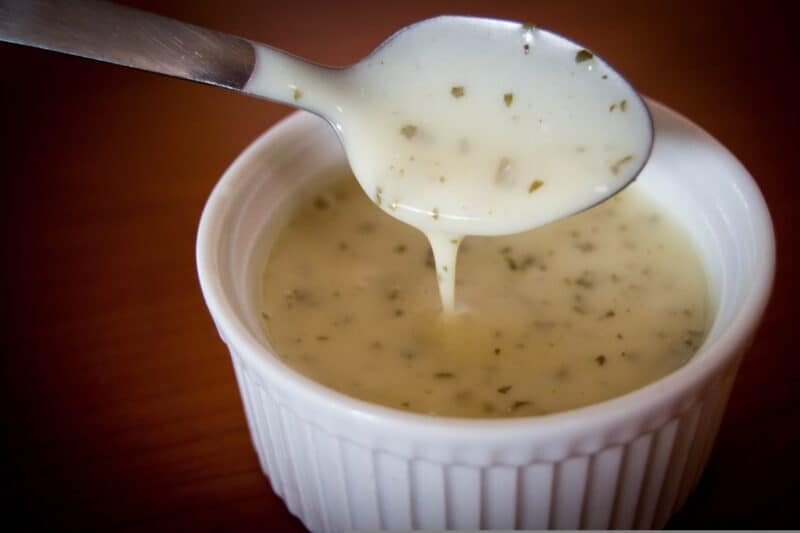
8. Salad Dressings
Occupying at least a quarter of the condiment aisle at the grocery, salad dressings are another modern staple that is ripe for both caloric and content disaster.
Most bottled dressings turn out to be little more than doctored mayo with some other vague flavors.
This is a shame since a good salad dressing can complement the bright, crisp flavors of a proper salad without filling your body with mystery garbage.
If you learn to make nothing else on this list, learn to make salad dressings. It really, truly, does not get any easier than this.
All you need to do is process your ingredients before combining them in a mason jar in order to let them mingle. When you are ready to use, stir, top, and enjoy.
The most important thing to remember when making salad dressings is that they should be a balance of flavors.
Too much acid or not enough will make for a dressing that is either unpalatable or boring, so it is important to find the right balance for your taste.
There are quite literally dozens and dozens of well-known recipes out there and at least a dozen personal or regional variations of each.
To get you started, I am including a link here to my favorite, a caesar dressing, but not one of those ranch-like abominations.
I am talking about a real caesar dressing with anchovy and all. Bracing, bright, and immensely savory, this is one you’ll put in your rotation on the regular. Recipe right here.
9. Chimichurri
For those not in the know, chimichurri is a condiment hailing from South America that is most commonly associated with Argentinean cuisine.
It is a bright green, coarse, and slightly chunky sauce made from parsley, garlic, vinegar, olive oil, and various spices.
While it might not sound like much, this humble sauce packs a flavorful punch that is perfect for everything from grilled meats to roasted vegetables.
Chimichurri is incredibly simple and incredibly easy to make at home and only requires a few simple ingredients.
The key to making a good chimichurri is to use fresh, live herbs, not dried stuff, since the flavor of dried herbs can be quite different from their fresh counterparts.
Once you have your herbs sorted out, the rest is simply a matter of chopping everything up and mixing it together.
Chimichurri is one of the more specialized condiments on this list, but definitely one of the easiest and certainly one of the healthiest.
Once you try it on a nice medium rare steak or some other succulent cut of meat you won’t go back to other, lesser toppings. Easy instructions at this link.
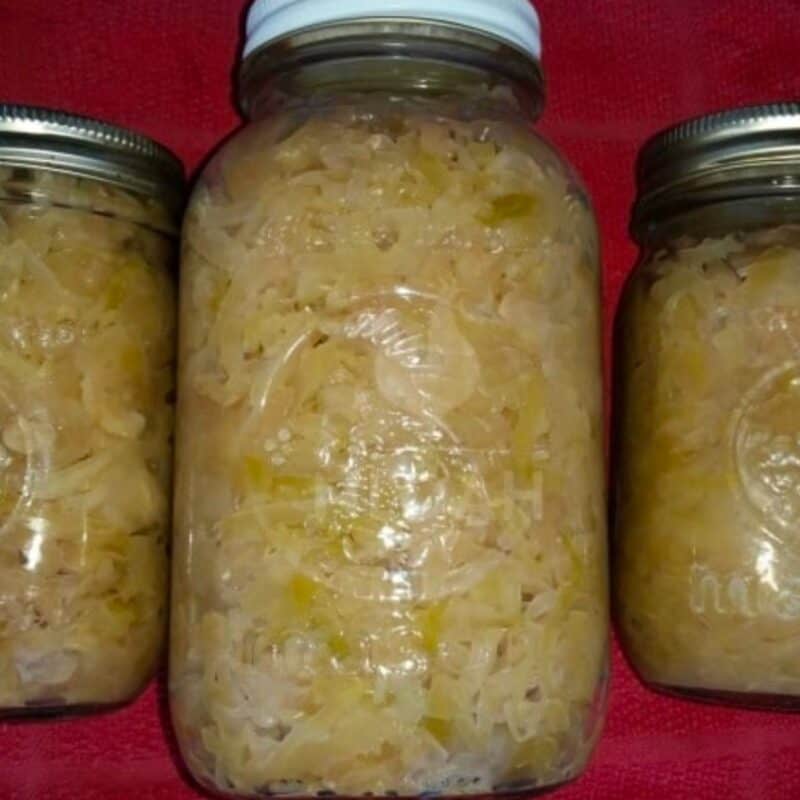
10. Sauerkraut
You might think of sauerkraut as more of a side than a topping but there is no denying that sauerkraut is still a wonderful way to top sandwiches and salads.
Sauerkraut, aside from being tangy-tasty and a good source of probiotics, is also a great thing for homesteaders to make since it is easy and keeps for a long time with just a few simple ingredients.
Making sauerkraut at home is incredibly easy and only requires cabbage, salt, and water. That, and time. You will calculate how much salt to add and how long to let the sauerkraut sit based on your taste preferences.
Done right, it takes hardly any work at all and can keep in the fridge for months on end. You can preserve your remainder after opening it by topping off the juice with a little bit of salt water.
If you are new to fermenting foods yourself, sauerkraut is a great and super cheap way to get acquainted with the process and turn out a delicious topping at the same time. Follow our easy instructions on how to make and can sauerkraut.
11. Chutney
Chutney is another condiment that sounds exotic and might have people scratching their heads, but it is nothing more than a type of jam or sauce made from fruits or vegetables, vinegar, sugar, and spices.
The word ‘chutney’ actually comes from the Hindi word ‘chatni’, meaning to eat with enthusiasm or appetite, which gives you an idea of how good this condiment is!
These days, chutney can be made in a food processor or blender with very little effort. While there are dozens of different recipes out there, the basic process is always the same.
First, you cook the fruit down until it is soft. This can be done on the stovetop or in the oven, depending on what type of fruit you are using and your personal preference.
Once the fruit is cooked, you add vinegar, sugar, and spices and blend everything together until it is smooth or a chunky consistency if you prefer.
Apricots, peaches, and even tomatoes all make great chutneys and are savory, sweet, or tangy at turns.
As for the spices, anything from ginger to cumin to fenugreek can be used to add spice and alter the flavor.
Chutney can be made with just about any type of fruit or veggie, and there is much fun to be had in experimenting with different combos of spices. Perfect if you want, get creative and experiment with different flavors. Basic version at this link.
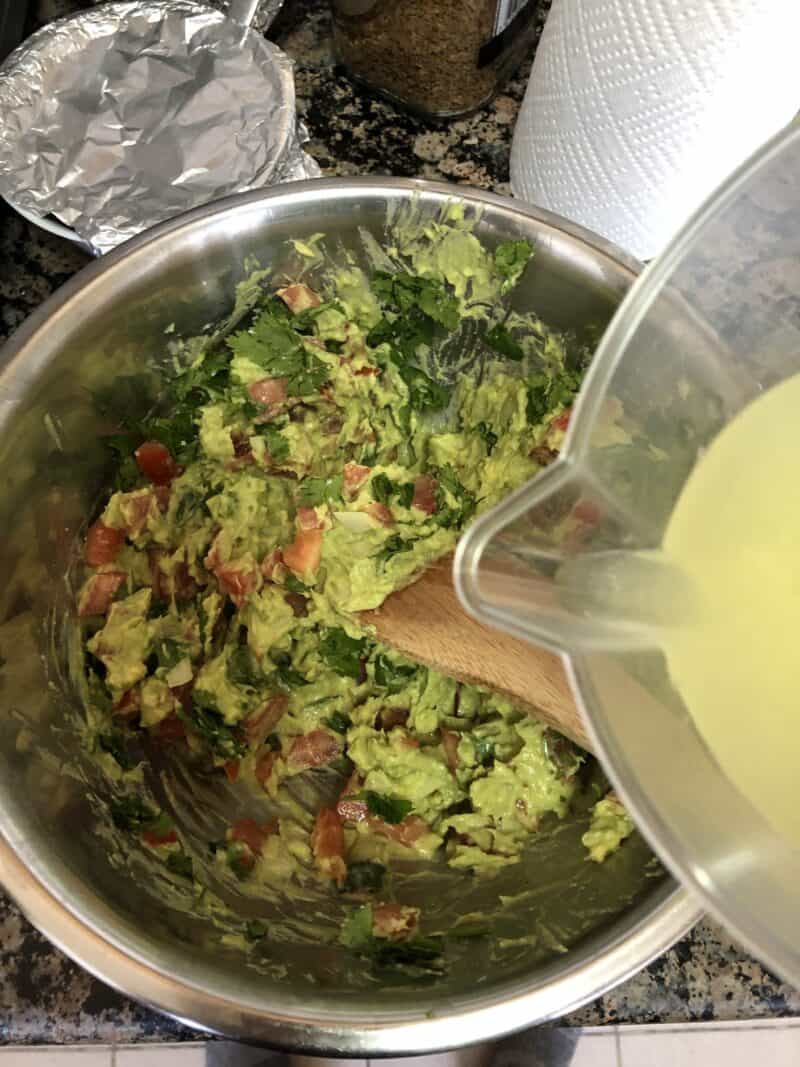
12. Guacamole
Is there any dip more sublime than guacamole? Maybe, but not for tortilla chips anyway, and definitely not one that can do double duty as a topping on a sandwich or wrap.
Guacamole is about as pure and simple as it gets, which might be one of the reasons I love it so much.
All you need are some ripe avocados, diced tomatoes, chopped onions, garlic, lime juice, salt, and pepper and you are good to go.
For a little bit more flavor, you can add a dash of cayenne pepper or jalapeno, but I like to keep it simple.
A little mash, a little mix, done deal. Let it sit for just a minute for the flavors to incorporate and you are ready to party.
It is such a shame, then, that seemingly all of the grocery store versions are overpriced and don’t last.
We all know what happens to avocados that are cut and left to sit for any time at all: that’s right, they turn to brown-gray slop. Nasty!
This leaves grocery-goers with a Hobson’s choice, either buy a standard container and wolf the whole thing down within a couple of hours after opening it, or else you can pay way, way too much for the little individually sealed cups…
Or, you can make your own in just a couple of minutes, super fresh, whenever you want it, and save a bundle. I know which one I would rather have. Make your own with this recipe.
13. Pesto
Pesto is one of those things that you either love or hate, there is no in-between. People who don’t like it often find the flavor to be too strong, but for those of us who are fans, there is nothing better.
Basil pesto is traditionally made with fresh basil, garlic, olive oil, parmesan cheese, and pine nuts all ground together into a paste.
It is delicious on pasta, of course, but can also be used as a spread on sandwiches or wraps, stirred into soup or chili, or even used as a dip.
If you have never made pesto yourself, you might be surprised at how easy it is. You simply throw all of the ingredients into a food processor or blender and give it a whirl while drizzling in oil until it reaches the consistency you desire.
I like mine to be a little smoother than most, but you can make it as thick or thin as you like so long as all the ingredients incorporate.
This is another condiment where fresh, wholesome ingredients make the difference. Make sure to use fresh basil and good parmesan, always!
You can try to use the dried and/or powdered stuff, but you’ll be disappointed. Classic recipe here.
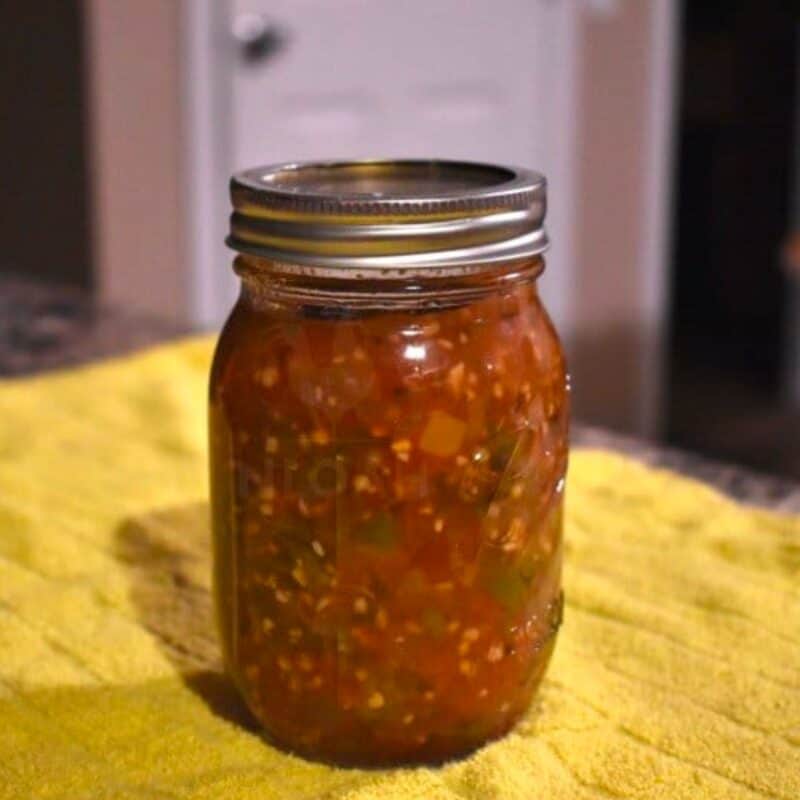
14. Salsa
In my house, salsa has basically taken the place of ketchup. I could probably eat it every day and not get sick of it.
I put it on tacos, burritos, nachos, eggs, you name it. The trouble is that most store-bought salsa is, frankly, pretty terrible. It is either too watery or too bland or just plain lackluster.
Making your own salsa at home is another easy achievement and only requires a few ingredients that you probably already have in your kitchen: tomatoes, onions, garlic, lime juice, cilantro, and salt.
This, of course, is just for basic salsa that we are all used to. Just chop everything up into small pieces and mix it all together. That’s it! You can even make it in a food processor with some careful pulsing.
Of course, there are about a million different ways you can alter this basic recipe, and some special variations of salsa depart from this framework entirely, adding in fruit, beans, and more.
But this is the essential, building block recipe that you can use as a foundation and then tweak to your own liking. Check out our recipe on how to make and can salsa, so you can use it whenever you need it.
15. Tapenade
Tapenade is a delicious French condiment made from olives, anchovies, capers, olive oil, and vinegar with sometimes lemon juice used as well.
It has a salty, briny flavor that is perfect on crackers or bread or even just eaten with a spoon for you real fans out there.
This is another one of those things that can be easily store-bought in nicer groceries, but it tends to be pricy and often disappoints.
The jarred versions I have tried have all been way too salty and not nearly flavorful enough compared to the genuine article.
This is likely due to the fact that they use cheaper, more processed ingredients. If you want the good stuff, you have to make it yourself.
Tapenade is very easy to use nothing more than a sharp knife and a little time, but if you want to be super authentic you can break out the mortar and pestle.
All that is needed is to process the ingredients down until it reaches the consistency you desire.
You can add more or less olive oil depending on how oily you like it and how long you want it to last in your fridge.
I like to keep a jar of this on hand at all times because it really is so versatile. It makes a great appetizer or snack, but can also be used as a sandwich spread or even stirred into pasta for an instant, potent flavor boost. Delicious and simple recipe here.
Craft Your Own Condiments Today
So there you have it: 15 easy and absolutely delicious condiments that you can make at home with minimal effort.
Once you get started, I guarantee you will be hooked and want to try making your own versions of all your favorite store-bought toppings, sauces, and dips.
Not only are they more flavorful and affordable, but you’ll also have the satisfaction of knowing exactly what is going into them.
No more unpronounceable ingredients! So go ahead, pick your favorite and start making your own condiments today.
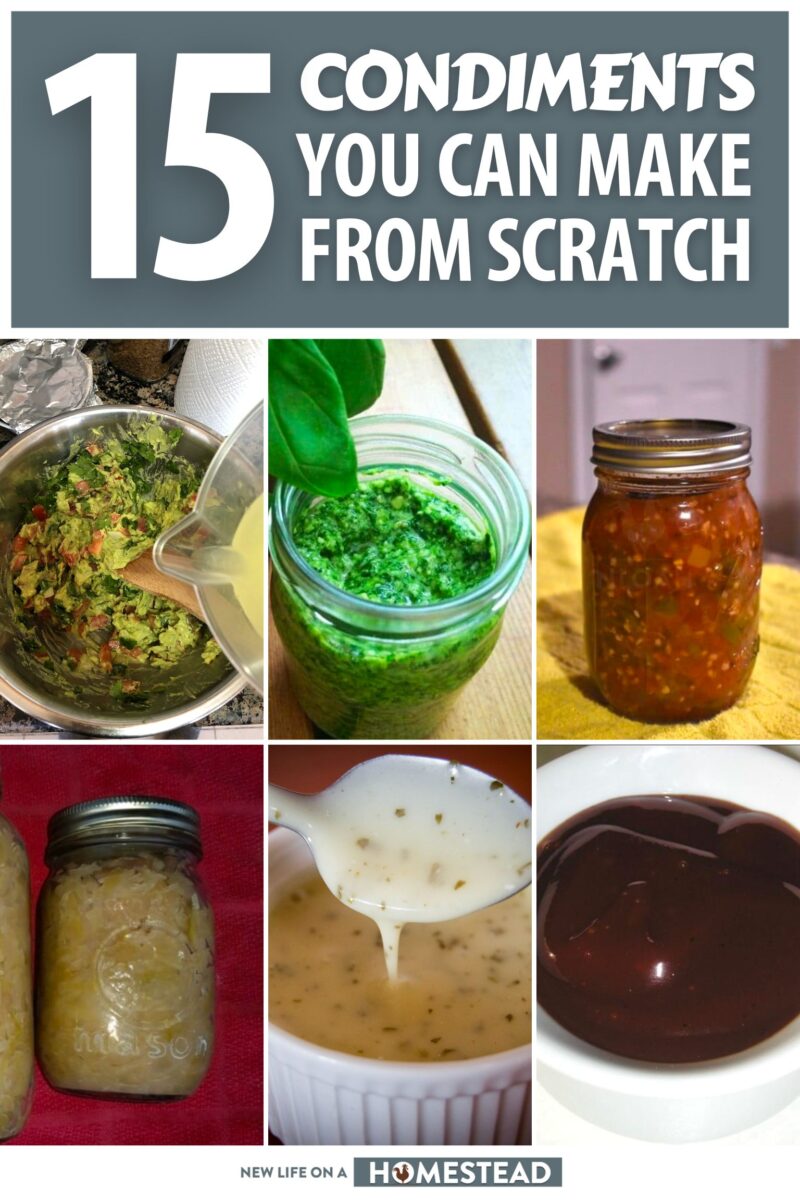
Tom has lived and worked on farms and homesteads from the Carolinas to Kentucky and beyond. He is passionate about helping people prepare for tough times by embracing lifestyles of self-sufficiency.
